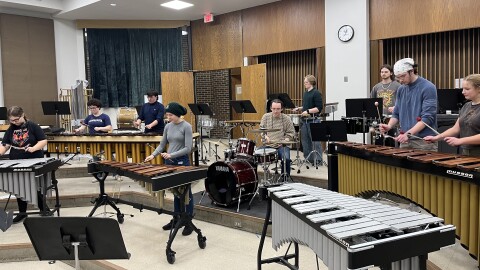When diving into prison population data, men are often the focus but researchers are gathering information on troubling statistics for women, with Minnesota cited in a new report.
The Prison Policy Initiative said around the world, the number of imprisoned women has grown by almost 60% since 2000, with the U.S. factoring heavily. Minnesota is below the national rate and most other states but it still outpaces most of America's closest international allies.
Wanda Bertram, communications strategist for the initiative, said for gender differences, men are still incarcerated at higher rates but recent declines show promise. She noted it is a different situation for women right now.
"The criminalization of essentially addiction, of mental illness and of poverty has driven women's incarceration in a way that is distinct from what has happened for men," Bertram explained.
She is referring to prosecutions of low-level offenses such as petty theft. Minnesota's incarceration rate for women is 53 inmates per 100,000 people. In 2021, the state adopted a law to place pregnant and postpartum inmates into alternative housing with their newborns for up to a year. Other research has noted forced separation is one of many harmful effects preventing women from staying out of prison.
Bertram pointed out on the surface, overall incarceration numbers for women appear minor but stressed the recent trends suggest elected officials cannot overlook what is happening. A consistent lack of access to diversion programs is one roadblock, and she thinks states need to invest more in social safety nets.
"You can invest in health care. You can invest in community services to keep people out of the criminal justice system," Bertram contended.
She added even if a state faces budget constraints in the near future, as Minnesota does, putting people in prison is still very expensive compared with "quality-of-life" needs. The report also touched on racial disparities. For example, in Minnesota and neighboring states, Native American women are significantly overrepresented in prisons.
-
In this episode, co-hosts Heidi Holtan and Charlie Mitchell discuss woodpecker grunts, gifts for nature nerds, and first aid for injured owls.
-
Laurie Kramer is a professor of applied psychology at Northeastern University in Boston and an expert in sibling relationships and managing strategies for family conflict.
-
Itasca County Attorney Jacob Fauchald expects the case to eventually go to trial, but there may be more legal maneuvering before then. Martin's next appearance is set for February 2026.
-
-
Brian Pelander of Alden Township was fatally injured when a tree fell by him the morning of Nov. 26, 2025.
-
The executive director of the Nameless Coalition for the Homeless and former Beltrami County commissioner posted a video on social media, saying he will seek the seat.
-
During the week of Nov. 25, 2025, we enjoy reports of bobcat sightings, Tundra Swans and a lingering heron. Staff phenologist John Latimer responds.
-
-
-
Percussion gets the spotlight during Bemidji State's Percussion Ensemble concert at 7:32 p.m. on Dec. 4, 2025. Eric Sundeen joined “Area Voices” to discuss the upcoming performance.













